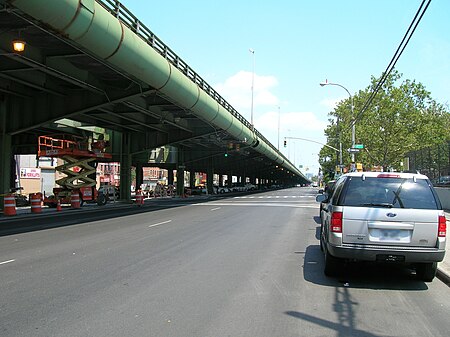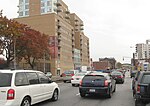46th Street station (BMT Fifth Avenue Line)
BMT Fifth Avenue Line stationsBrooklyn railway station stubsDefunct New York City Subway stations located abovegroundFormer elevated and subway stations in BrooklynRailway stations closed in 1940 ... and 2 more
Railway stations in the United States opened in 1893Sunset Park, Brooklyn

46th Street was a station on the demolished BMT Fifth Avenue Line. It was served by trains of the BMT Fifth Avenue Line in Brooklyn, New York City. It had 2 tracks and 1 island platform. The station was built on October 1, 1893, and despite the name of the line was actually located on Third Avenue and 46th Street. The next stop to the north was 40th Street. The next stop to the south was 52nd Street. It closed on May 31, 1940. Current rapid transit service in this area can be found one block east and then another block north at the 45th Street station on the underground BMT Fourth Avenue Line.
Excerpt from the Wikipedia article 46th Street station (BMT Fifth Avenue Line) (License: CC BY-SA 3.0, Authors, Images).46th Street station (BMT Fifth Avenue Line)
3rd Avenue, New York Brooklyn
Geographical coordinates (GPS) Address Nearby Places Show on map
Geographical coordinates (GPS)
| Latitude | Longitude |
|---|---|
| N 40.649791666667 ° | E -74.012697222222 ° |
Address
3rd Avenue 4606
11220 New York, Brooklyn
New York, United States
Open on Google Maps









